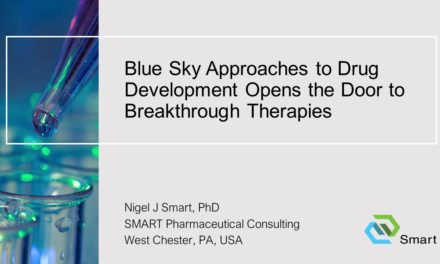 If a growing biotech company wants to succeed, it must create long-term sustainable value. Everyone wants to partner with large pharmaceutical companies, however, either they do it very early and give away an important part of their long-term value, or they are unable to build all the capabilities on time to allow for their technological value to be noticed. These partnerships are difficult to manage given the important cultural differences between organizations, so, even though they are a fast way to build value, they very often fail to deliver.
If a growing biotech company wants to succeed, it must create long-term sustainable value. Everyone wants to partner with large pharmaceutical companies, however, either they do it very early and give away an important part of their long-term value, or they are unable to build all the capabilities on time to allow for their technological value to be noticed. These partnerships are difficult to manage given the important cultural differences between organizations, so, even though they are a fast way to build value, they very often fail to deliver.
The most reliable way for a biotech company to become successful is to develop a product that meets a specific need and thus, is bought by many customers. However, getting there is not easy.
Biotech companies normally strive to partner with a pharmaceutical company as a way to validate their technology and ensure financing. These partnerships possess many benefits, but also pose challenges and disadvantages, namely: an increasing number of biotech companies seeking partnerships; the fact that pharma companies really do not give extra benefits like better R&D effectiveness and only pay royalties for well-defined product candidates; the difficulty of managing such different working cultures; and the fact that the big company always gets the largest portion of the deal because it acts as the technology integrator.
Pharmaceutical companies have proven to be very inefficient in making the fast decisions needed to take advantage of the opportunities at the drug candidate and clinical proof of concept phase of the drug discovery process, a field where biotechs move very fast and where their business approach can better meet the challenges of this phase.
The problem is that biotechs on their own do not possess the range of capabilities needed to keep product rights after Phase IIa or to give an integrated technology solution. In order to address this, some biotechs decide to join forces with other biotechs that have complementary capabilities. Although this seems logical and feasible, since both have similar cultures and complementary skills working together on a common purpose, these partnerships have failed in the past.
What happens is that the partnership relationship works well great until the companies have to commit to additional resources to take an initial lead to a drug candidate, and they start discussions to partner with pharma companies. Then, they start thinking what’s best: to continue the 50:50 partnership that offers no revenue in the short term or use their resources to join pharma. Most commonly, they select pharma because this provides the fastest solution to market.
Nevertheless, biotech-biotech partnerships are very valuable for these companies to hold on to important value by giving pharma what it wants: integrated technology solutions or product candidates with proof of concept clinical data.
In order to achieve biotech-biotech partnering success, it is vital to design a carefully structured arrangement. It is necessary to look at the relationship throughout phases and to define responsibilities, deliverables, and resource commitments for the first phase, always considering that something can change, thus, an alternative plan must be established in the agreement. At the end of each phase, each partner must have the opportunity to commit again or leave, with clear terms that should be agreed upon.
The initial agreement should guide the relationship through the other phases, and it must offer a flexible way to identify responsibilities. Given the fact that new companies change very rapidly, flexibility is crucial. In truth, the shorter the partnership, the better. Since both parts have to compromise, every partnership offers aspects of the relationship that are less desirable for each party. Each company must be able to develop its own interests and path forward, so as to have a better chance of success. Three worthy models for biotech-biotech partnerships are:
– Barter model
– Baton exchange model
– Draft model
Pharmaceutical consulting firms can provide information and guidance on these three models and how to best apply them given the case.
Through biotechs partnerships, these companies can control their technologies for high-value deals by keeping product rights through Phase IIa or by providing an integrated technology solution. In this way, biotechs can profit from their strengths and move efficiently through drug discovery and early drug development, giving them the space to consider their next step: continue developing the product alone since it will have the financial capability to do it, or consider a partnership with a pharmaceutical company.
If you liked this article, tell all your friends about it. They’ll thank you for it. If you have a blog or website, you can link to it or even post it to your own site (don’t forget to mention www.smartpharmaconsulting.com as the original source).
Don’t Forget to Subscribe by RSS or Email:




